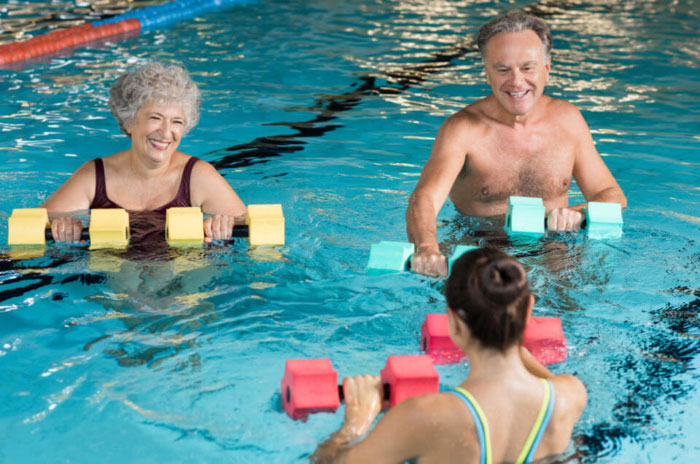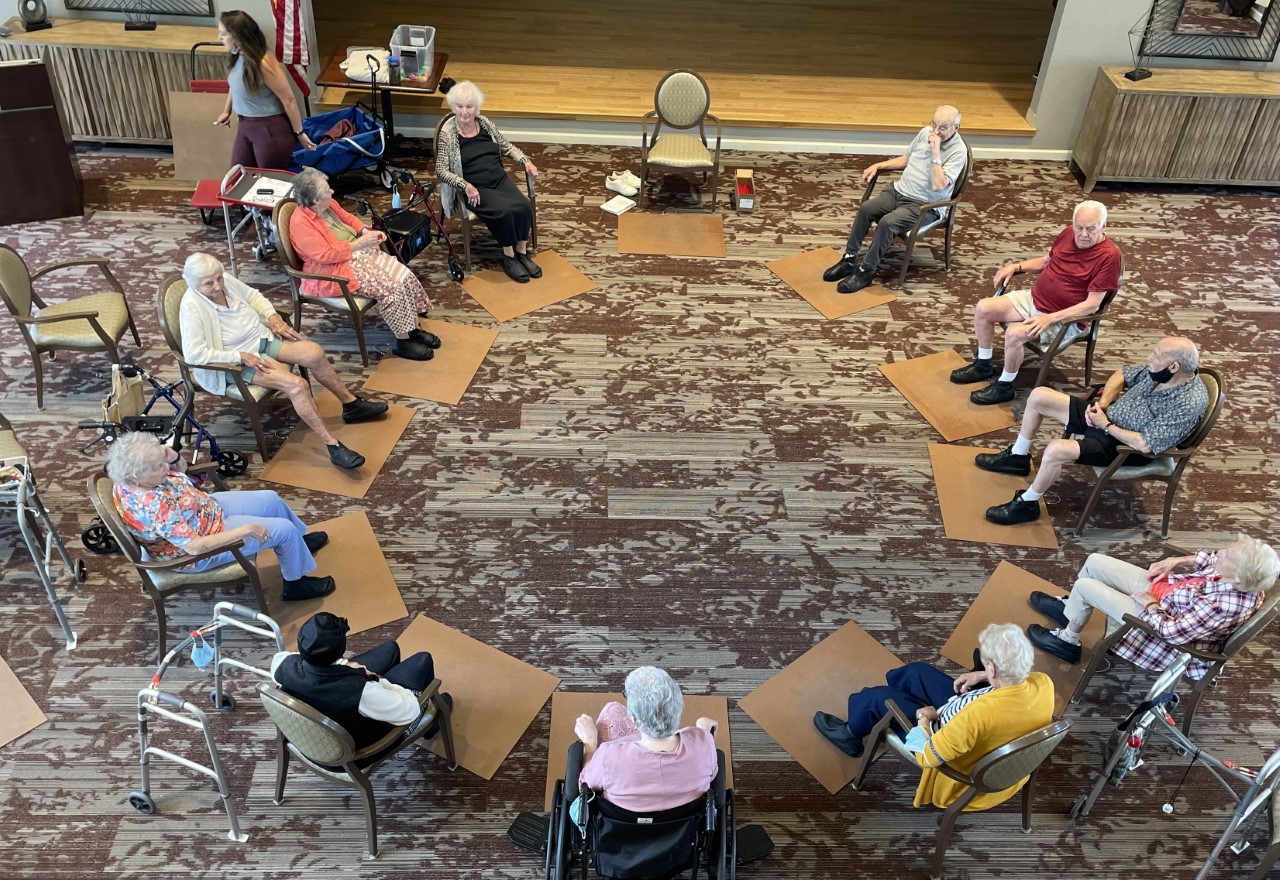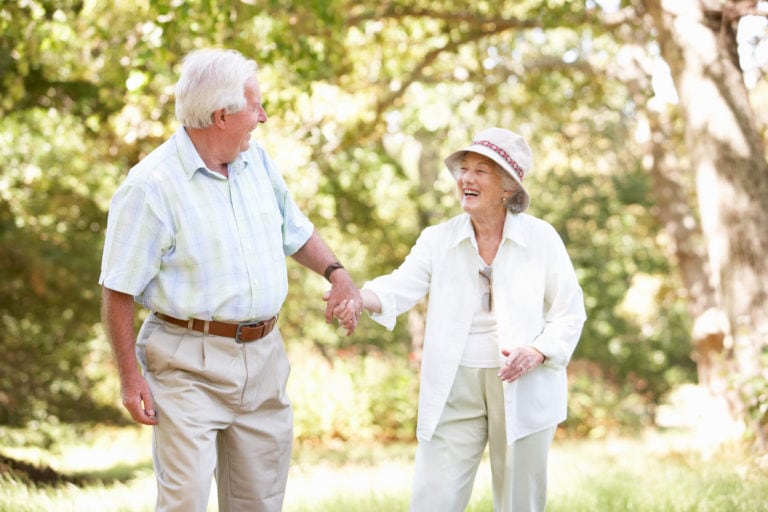Staying active and getting enough exercise is as important for seniors and older adults at any other stage of life. In fact, low-impact exercises for seniors like stretching and strength training are actually necessary to help stay healthy and reduce the risk of common age-related problems like bone fractures, joint pain, and other chronic illnesses. In addition to the physical benefits, exercise can also help manage stress, anxiety, and depression, which can be just as detrimental to senior health as physical ailments and injuries.
Best Low-Impact Exercises for Seniors
Everyone has different physical needs, whether they are 20 or 70. Seniors who have been lifelong athletes or continuously active throughout adulthood may actually be in better physical shape than someone much younger.
Others reach retirement age and the senior years after living predominantly sedentary lifestyles and are afraid to begin exercising later in life for fear of getting injured. As we age, our bodies and physical abilities and requirements change, and exercise routines need to be adapted as a result.
The first step before beginning any new fitness or exercise routine, especially for seniors, is to consult a medical professional to make sure you are choosing the most appropriate activity for your health.
Once your doctor has given the green light to get started, low-impact exercises are a great way to yield the benefits of physical activity, with lower risks of strain and injury. A few of the best low-impact exercises for seniors include:
Walking
From power walks around the neighborhood (or on a treadmill) to light hiking on a trail or through a park, walking is one of the easiest and most enjoyable low-impact exercises, especially for seniors. Although walking seems deceptively easy and effortless, it should be treated like any other physical activity. Wearing supportive footwear and comfortable clothing, taking precautions to protect from sun exposure and warming up before and stretching after are all necessary to stay healthy and reap the most benefits from the activity. Depending on current fitness and activity levels, seniors should start out slowly and build up gradually to a brisker pace for 30 minutes or longer as appropriate.
Swimming
Like walking, swimming provides all of the major benefits of physical activity on muscular and cardiovascular health, with an added level of protection for the joints. Swimming is one of the most comprehensive, low-impact exercises available that also provides a full-body workout. Regular swimmers generally enjoy greater flexibility and endurance and can maintain healthy muscle, especially important for seniors.
Seniors with limited or no experience swimming should not be intimidated or avoid the sport — classes are available for new swimmers of all ages, and learning a new activity is also a great way for seniors to build healthy, new neural connections that can help with everything from memory to fighting depression. Swimming can also be a communal activity leading to new social interactions and friendships.
Cycling
With the rise of indoor cycling gyms and a renewed interest in outdoor cycling and bike-friendly communities, there has never been a better time to take up cycling, regardless of age, experience or skill level. Like swimming and walking, cycling (whether stationary or outdoors) is a highly effective, low-impact activity. There are many different styles of bikes to accommodate riders of all physical conditions and levels. Cycling is easier on the joints than other cardiovascular activities such as running and may relieve arthritis pain, improve cardiovascular health, and help to regulate blood pressure for some seniors.
Yoga
Despite the images of mostly young and limber yogis doing handstands on social media, yoga and stretching are accessible for people of all ages. Like walking, yoga may seem to be a deceptively light workout, but it actually covers all of the major categories like balance, flexibility, and building strength. No headstands or complicated pretzel poses required!
Tai Chi
Tai Chi may be one of the least strenuous and low impact activities around, but it can deliver a number of health and wellness benefits for seniors. In addition to the physical movements and stretching, Tai Chi also incorporates breathing exercises, which can help with stress relief and have a general calming effect. Tai Chi can also help to improve balance and coordination, which begin to decline with age or as a result of certain injuries.
Dancing
Not only is dancing a great, low-impact physical activity for seniors, it is a lot of fun! With many different styles, from high energy salsa dancing to a mellow waltz, dancing provides a number of health benefits for seniors. A study conducted by the Albert Einstein College of Medicine found regular dancing is associated with lower risk of developing dementia. Other studies have shown dancing can help to alleviate joint pain, and even decrease the need for pain medication in some cases. The social aspect of dancing also helps to address loneliness, depression, and isolation among seniors. Did we mention dancing isn’t only for couples? Line dancing, folk, square dancing, and dance-based fitness classes are a great way to exercise and meet people – no partner required!
For more information about senior health, our Personalized Exercise Program (PEP), assisted living and home care resources at SALMON Health and Retirement, contact us today.




